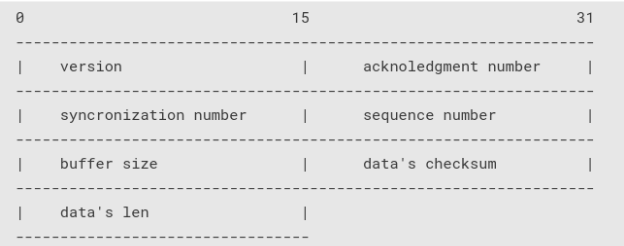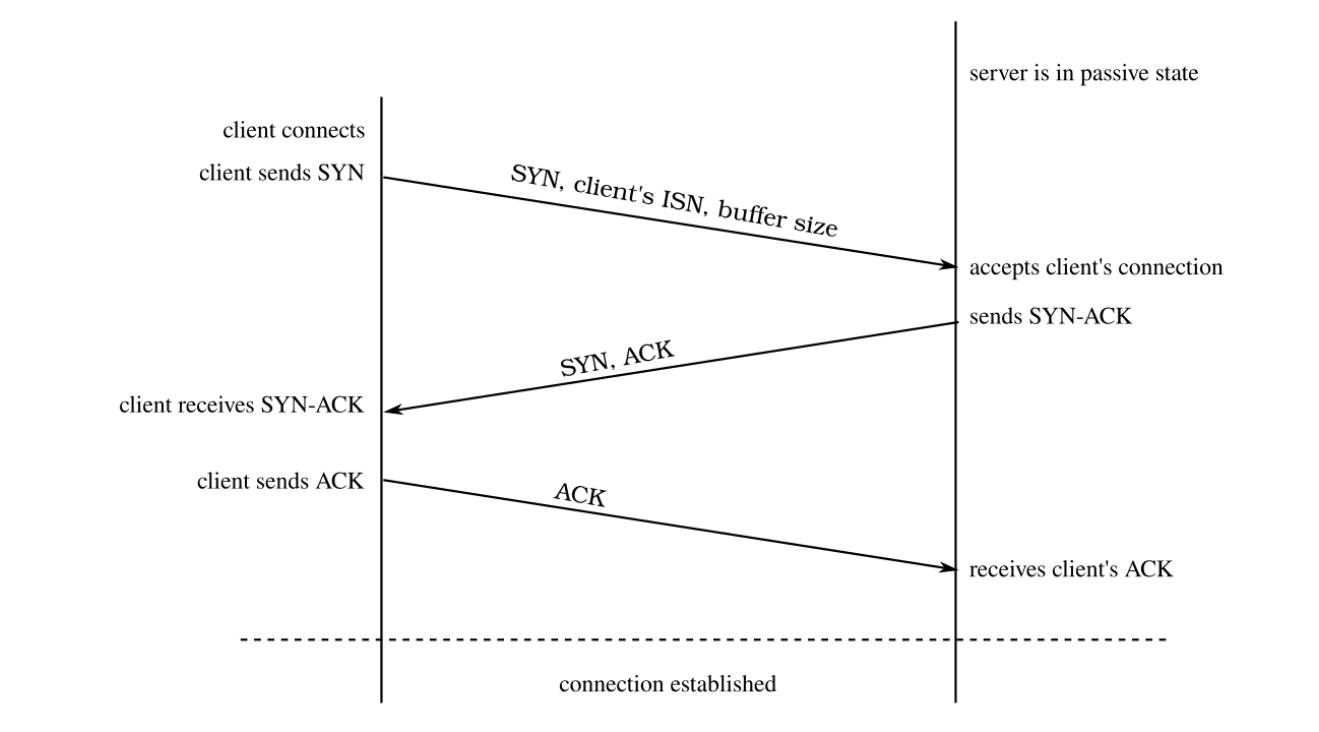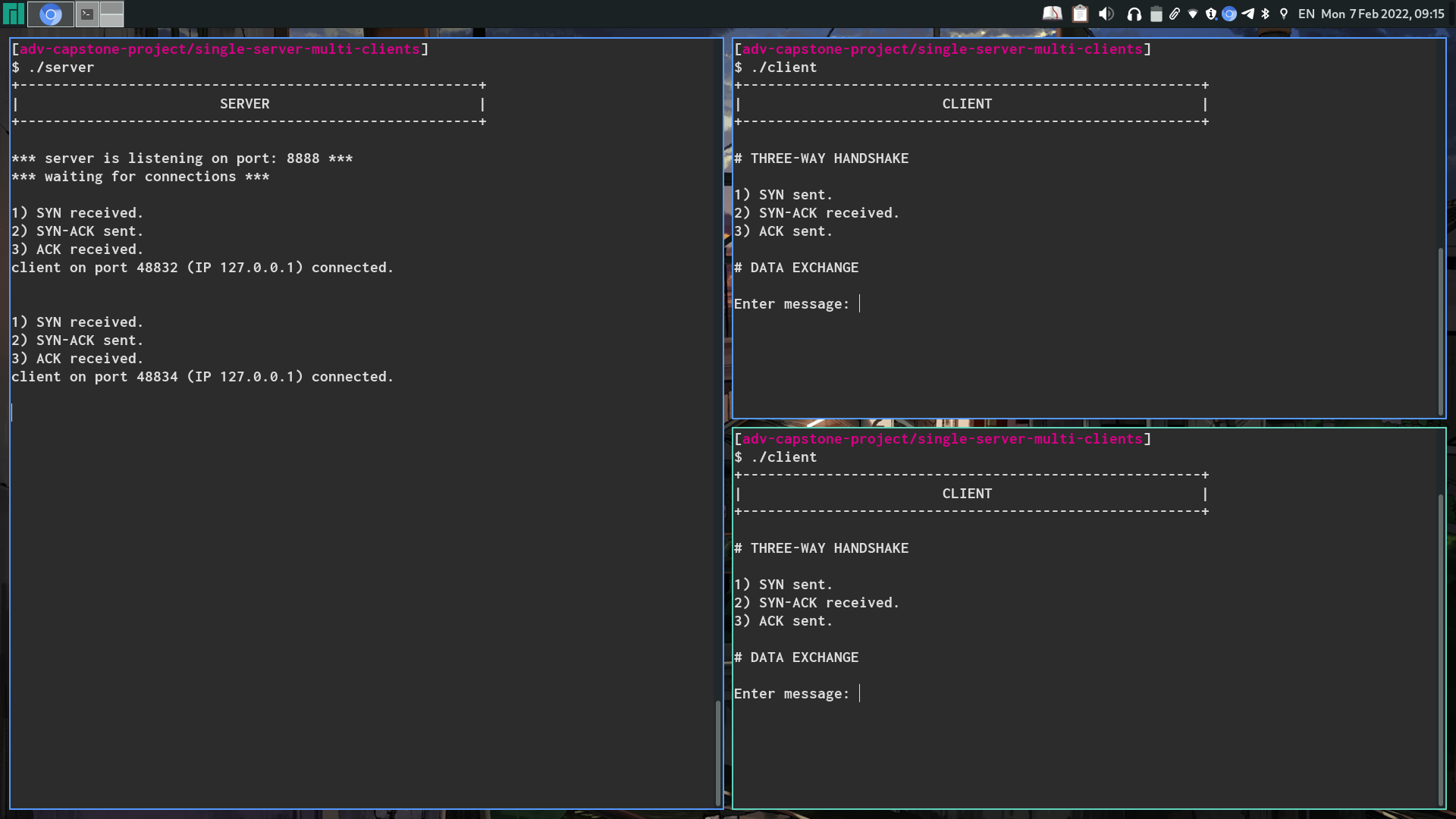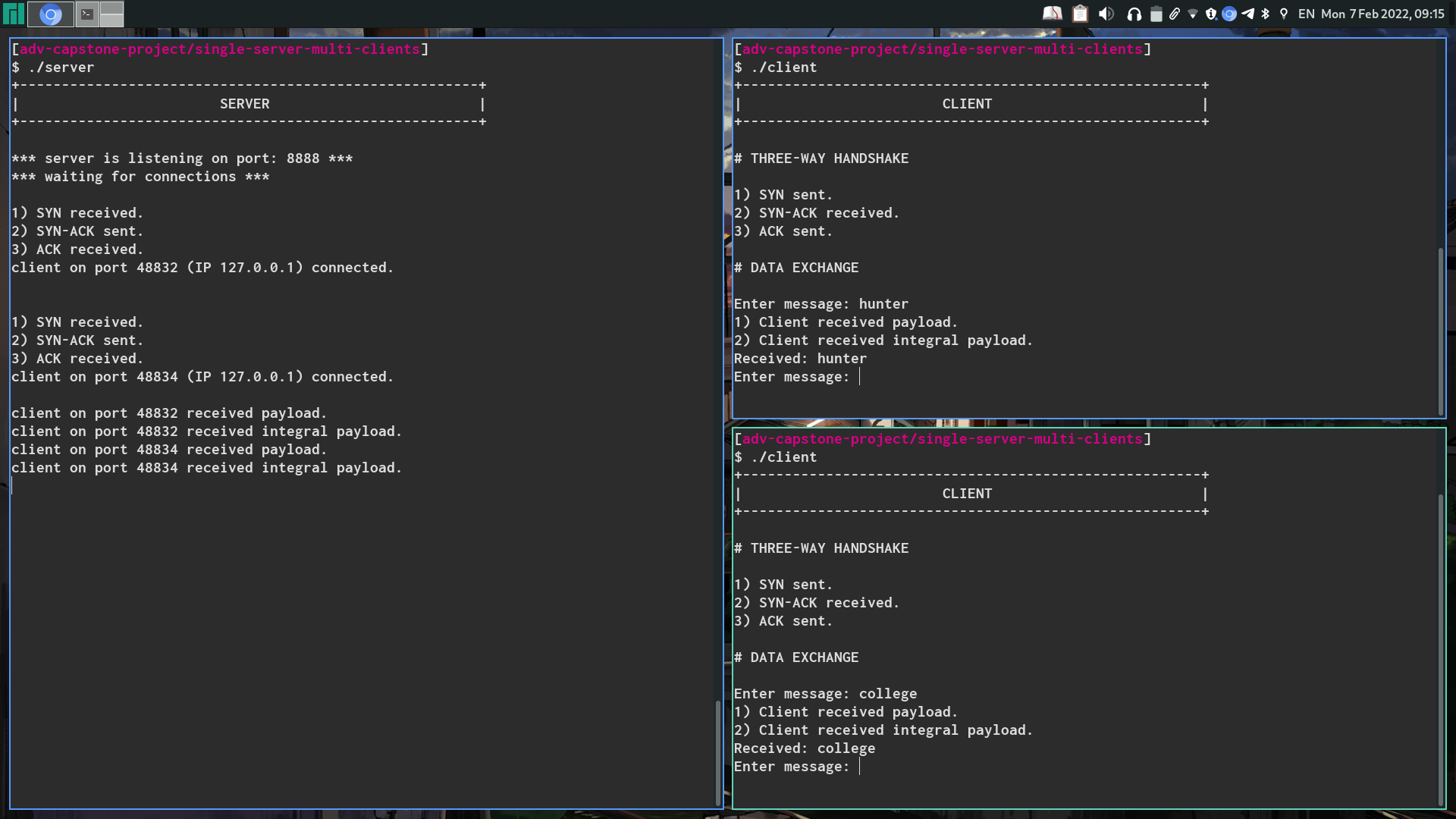This repo is for Prof. Soumik's CS499 (Capstone) course at Hunter College, in which I was tasked with a single-server single-client implementation, which would later evolve into a single-server multi-client implementation, and finally utilized as the networking backbone for a simple implementation of the peer-to-peer distributed file system IPFS.
The single-server single-client implementation involved several stages of development:
- In the first stage, I implemented a three-way handshake protocol between the server and the client in order to establish a connection.
- In the second stage, I implemented the exchange of a payload, composed of a header and the data, between server and client besides handling a few DDOS attack cases.
The three-way handshake started by describing the header protocol, and then how the handshake would be carried out.
The header is 16 8-bit bytes in size and it’s arranged as follows:
- Version: the protocol’s version.
- Acknowledgement number: This is the ACK used to communicate acknowledgement.
- Synchronization number: This is the SYN used to communicate the willingness to connect.
- Sequence number: This contains the ISN (Initial Sequence Number).
- Buffer size: This contains the buffer’s size exchanged during the three-way handshake. After the three-way handshake, this is agreed-upon buffer’s size over which the data transmission happens.
- Data’s checksum: During the data exchange between client and server, this field contains the data’s checksum used to check for its integrity.
- Data’s length: This contains the data’s length transmitted and used to dynamically allocate the necessary memory to copy the data from the buffer.
When a connection is established the following process, known as the three-way handshake, is carried out:
- The server finds itself in a passive open state, in which it’s prepared to accept an incoming connection from a client.
- The client issues an active open by calling connect. During this process, the
client sends a “synchronize” (
SYN) packet, which signals the server the client’s willingness to connect it. This segment tells the server the client’s initial sequence number (ISN), which is randomly chosen, alongside theSYNflag set to 1 and the buffer’s size. - The server must acknowledge (
ACK) the client’s SYN. Here the server sends aSYN-ACKsegment with the server’s ownISN,SYNflag set to 1, andACKset to the client’sSYN + 1. - The client checks the server’s
SYN-ACKsegment and acknowledges the server’sSYNby sending anACKset to the server’sISN + 1.
At each stage of the handshake, if the right segment doesn’t arrive either the
client or the server asks for a retransmission of the segment to either the
server or client respectively. Either the client or the server tries to
retransmit the segment an N number of times, after which it closes the
connection if N exceeds the maximum number of allowed retransmissions M. In the
current implementation, the maximum number of retransmission attempts is 3 by
default.
Once the three-way handshake is established, the server and client are ready for exchanging data. During this data exchange, two use cases are addressed:
-
Client receives data. If the client receives some data from the server, then the program proceeds. Otherwise, the client issues a request for retransmission to the server. Once the server receives a retransmission request, it retransmits the same header and payload to the client an N number of times. The client is expected to receive the header and payload during one of those trials, otherwise the server closes the connection and the program exits.
-
Data integrity. Once the client receives some data, it checks its integrity by comparing the computed checksum against the checksum received from the client. If the checksums match, then the program continues. Otherwise the client issues a retransmission request to the server, which retransmits the header and payload for an N number of times. The client is expected to receive the payload and header during one of those trials, otherwise the server closes the connection and the program exits.
Connection established between a single server (left) and two clients (left):
Data exchange between a single server (left) and two clients (right):
To compile server.c and client.c, simply run make. This creates the executable server and client.
Open a terminal and execute server:
$ ./server
which displays the following:
+-------------------------------------------------------+
| SERVER |
+-------------------------------------------------------+
*** server is listening on port: 8888 ***
*** waiting for connections ***
In another terminal, execute client:
$ ./client
which displays the following:
+-------------------------------------------------------+
| CLIENT |
+-------------------------------------------------------+
# THREE-WAY HANDSHAKE
1) SYN sent.
2) SYN-ACK received.
3) ACK sent.
# DATA EXCHANGE
Enter message:
Ther server terminal should look as follows:
+-------------------------------------------------------+
| SERVER |
+-------------------------------------------------------+
*** server is listening on port: 8888 ***
*** waiting for connections ***
1) SYN received.
2) SYN-ACK sent.
3) ACK received.
client on port 55800 (IP 127.0.0.1) connected.
If a message is typed in the client terminal:
+-------------------------------------------------------+
| CLIENT |
+-------------------------------------------------------+
# THREE-WAY HANDSHAKE
1) SYN sent.
2) SYN-ACK received.
3) ACK sent.
# DATA EXCHANGE
Enter message: Hello!
1) Client received payload.
2) Client received integral payload.
Received: Hello!
Enter message:
and the server terminal:
+-------------------------------------------------------+
| SERVER |
+-------------------------------------------------------+
*** server is listening on port: 8888 ***
*** waiting for connections ***
1) SYN received.
2) SYN-ACK sent.
3) ACK received.
client on port 55800 (IP 127.0.0.1) connected.
client on port 55800 received payload.
client on port 55800 received integral payload.
Multiple clients can be connected to the single server.
For the IPFS implementation, the group outlined and gave a powerpoint presentation how they would integrate their individual projects (i.e., networking, file systems, blockchain, machine learning and reinforcement learning), however no code was written due to time constraint.



